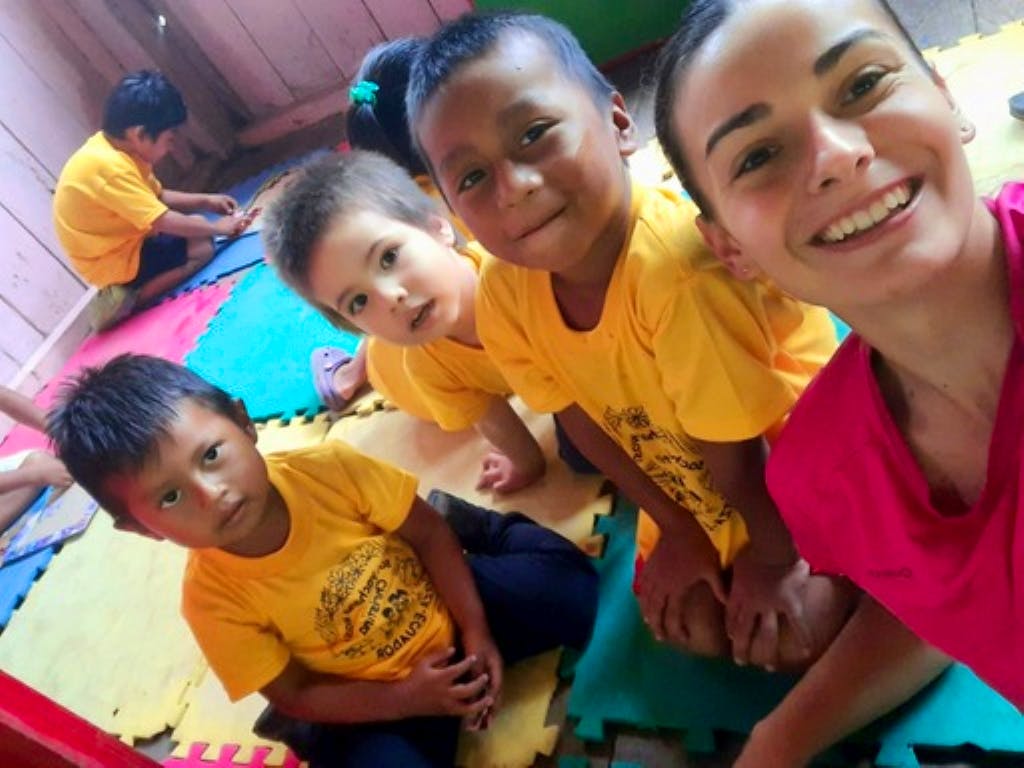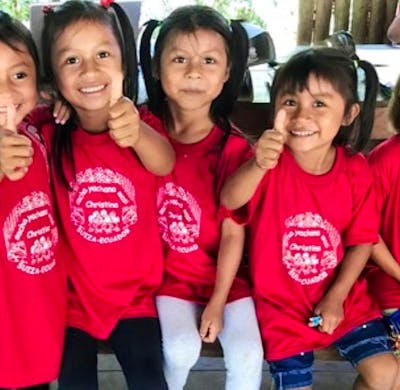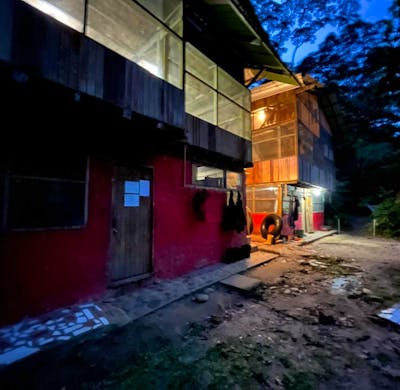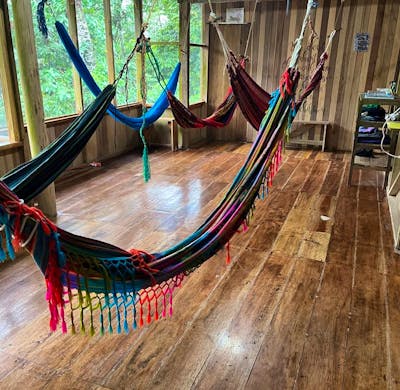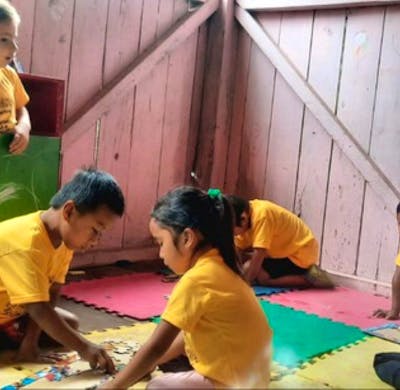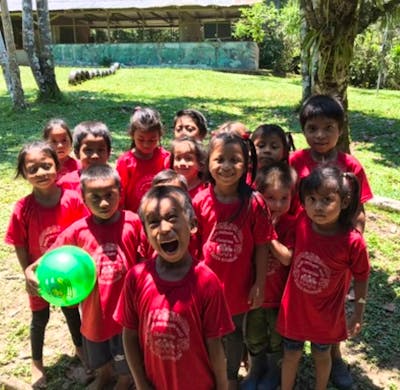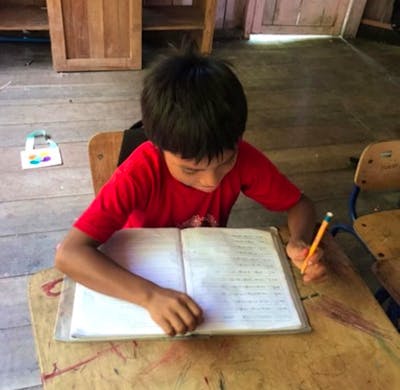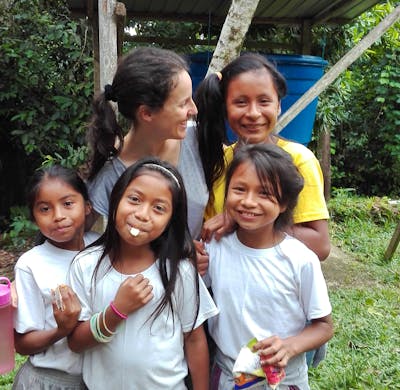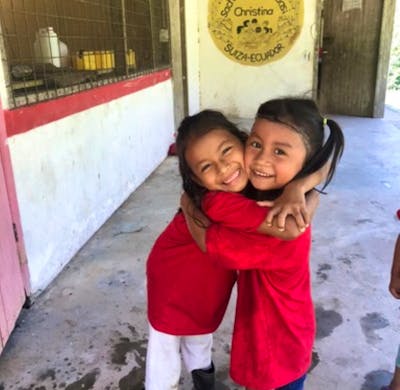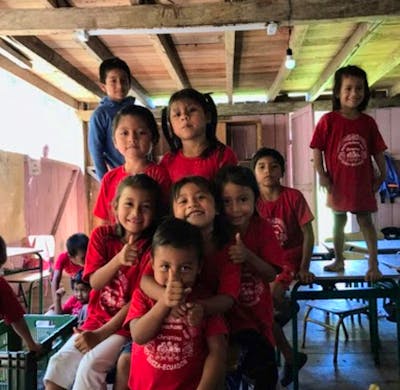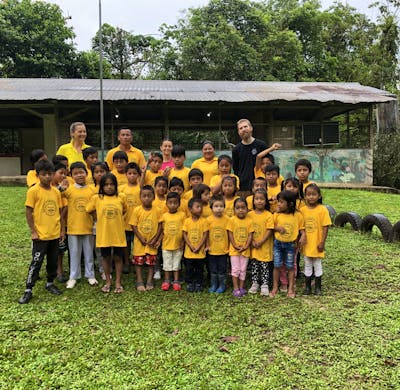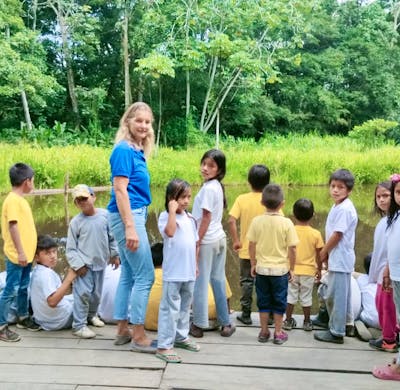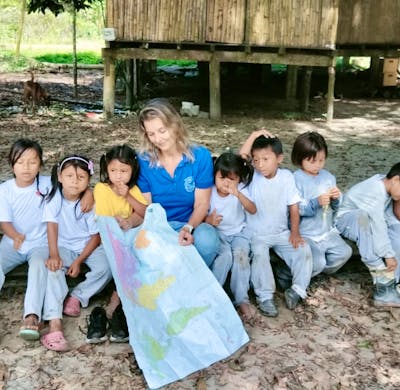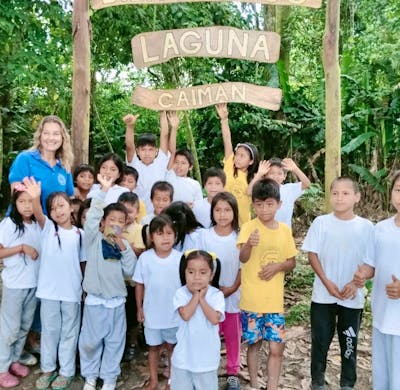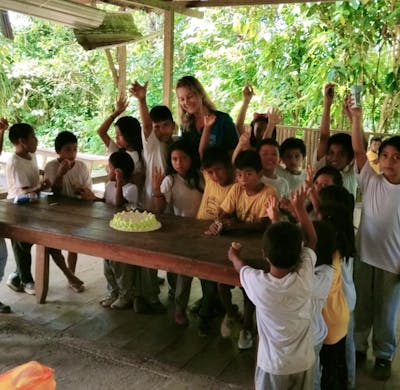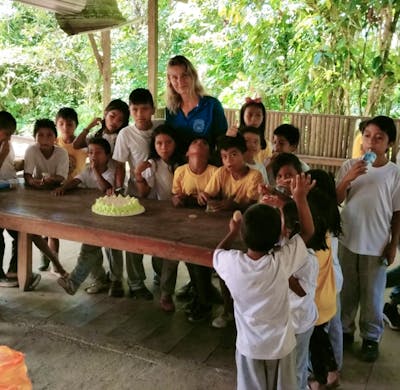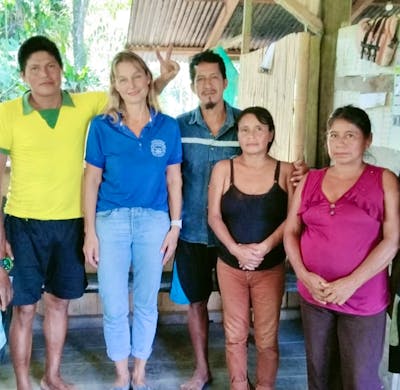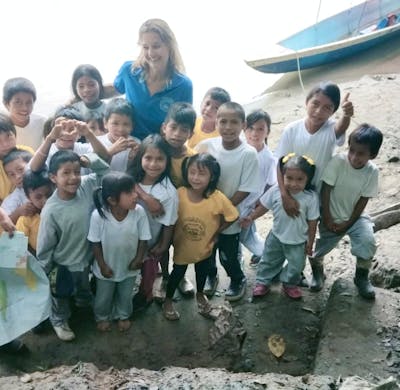2023 at School Teacher in the Jungle
ab 430€
School Teacher in the Jungle
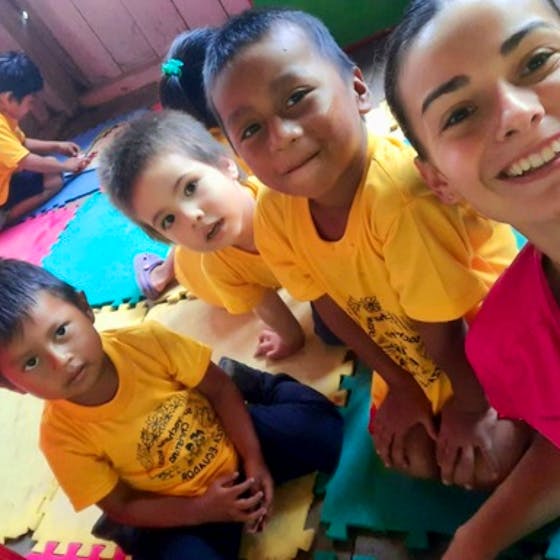
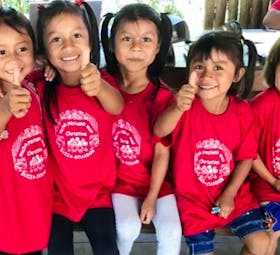
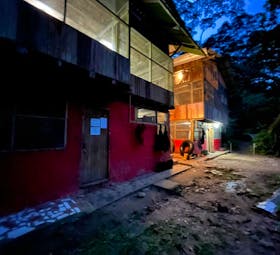
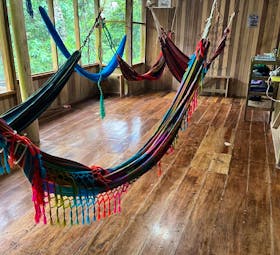
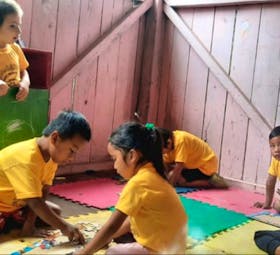
Highlights
- 🎓 Teach and learn with Kichwa kids, an amazing growth journey for both teachers and students
- 🐵 Experience the Amazon Rainforest, a unique adventure in the most biodiverse place on Earth
- 👌 Immerse yourself in the local Kichwa culture; appreciate a different way of seeing the world and nature
- 🤝 Build long-lasting friendships across cultural boundaries
- ❤️ Contribute to the education of the future stewards of the Amazon
Besonders geeignet für
Über das Programm
If you are passionate about teaching and supporting marginalized peoples, come to the remote Amazon to teach and learn with amazing children from the Kichwa community
Our program
The Sacha Yachana Wasi Christina school was founded in 2001 as part of the umbrella project, "Selva Viva," which also includes a protected forest, a wildlife rescue center, and an ecotourism lodge. The projects work collectively to ensure that the Ecuadorian Amazon and its inhabitants ...
Tagesablauf
6:30:
Children begin to arrive on the school canoe
7:00: The formal school day begins, the director gives a daily introduction to the entire group
7:30: The children split into their various classrooms
9:00: The children break for snacks and recreational time (volunteers return to amaZOOnico where they ...
Freizeitaktivitäten
Free time is precious time
🧘🏊🚶🛌🚣🧗🤸📚
We expect volunteers to work hard, but we also expect them to take time to slow down and enjoy the experience to the fullest.
Tourism is the primary source of income for the region; therefore, you will find many opportunities for fun ...
Voraussetzungen
Leistungen
Was ist NICHT inklusive?
Informationen zur Anreise
Arrivals are on Sundays only
Programmgebühren
Lerne deine Organisation kennen

Amazoonico
Non-profit - gegründet 1993
von Volunteer World verifiziert
Veranstaltet von
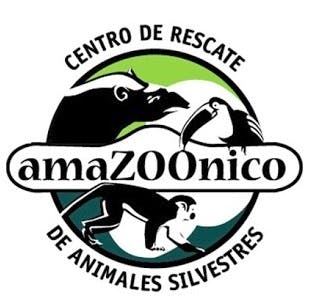
Sandra
Über die Organisation
25 Bewertungen ·  4.7
4.7
Lage

Das könnte dich auch interessieren
-
Amazonas-Regenwald
Praktikum im Ausland
Gruppen
FSJ im Ausland
Beste Freiwilligenprogramme
Freiwilligeneinsätze für College-Studenten
Guenstige Freiwilligenarbeit
Projekte im Ausland
Paare
Freiwilligenarbeit Kurzprogramme
Flexible Freiwilligenarbeit
Erwachsener
Auslandsfreiwilligendienst
Lateinamerika
Familie
Senioren
